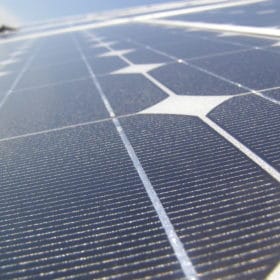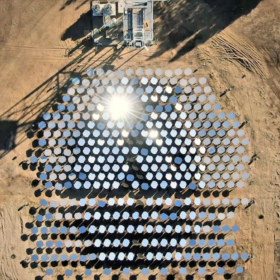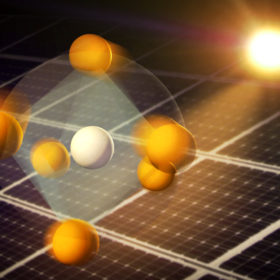Observing silicon anodes in action
Scientists in the United States working with silicon anodes for lithium-ion batteries have managed to model key mechanisms that lead to fast developing performance loss in the anodes. Understanding what causes the silicon to swell up and subsequently fall apart, the scientists say, is an important step to preventing it, and producing long lasting, high-capacity batteries.
US government wants to cut solar costs by 60% in 10 years
The US Energy Department set a goal of achieving 2 cents/kWh by 2030, and announced an initial $128 million in funding to support technology development.
CSP startup Heliogen scores $39 million for CO2 project
Heliogen, which was founded by serial entrepreneur Bill Gross, aims to revitalize concentrated solar power with sCO2 tech to cut costs, water use, and plant footprints in industrial applications not suited to solar PV.
Navajo Nation land could host 2.2 GW pumped hydro storage station
The Federal Energy Regulatory Commission has accepted Daybreak Energy’s application to develop a 2,230 MW pumped-hydro facility on the banks of Lake Powell in Utah.
Supercomputer scientists dye-ing to test new cell materials
Researchers from the U.S. Department of Energy’s Argonne National Laboratory, working with Cambridge University, programmed a ‘supercomputer’ to narrow down a list of almost 10,000 materials with the potential to be used in dye-sensitized solar cells to just five that fit their parameters for high performance, low cost and low environmental impact.
US scientists claim new efficiency record for organic tandem solar cells
A team from the University of Michigan in the U.S. has developed an organic tandem solar cell with 15% efficiency, a new record for an organic solar cell. The scientists utilized a novel method for stacking the two layers on top of each other without damaging either layer.
Stanford & DOE research brings insight into perovskite efficiency
Scientists at the Department of Energy’s SLAC National Accelerator Laboratory have published research revealing unusual atomic motions in perovskite materials exposed to light. The discovery, says Stanford, could prove crucial to further increasing the efficiency potential for perovskite solar cells.
Rick “Oops” Perry becomes the new U.S. Secretary of Energy
The man who once famously forgot the U.S. Department of Energy in a 2012 Republican presidential debate is now, astonishingly, the person who was just confirmed to lead it.








